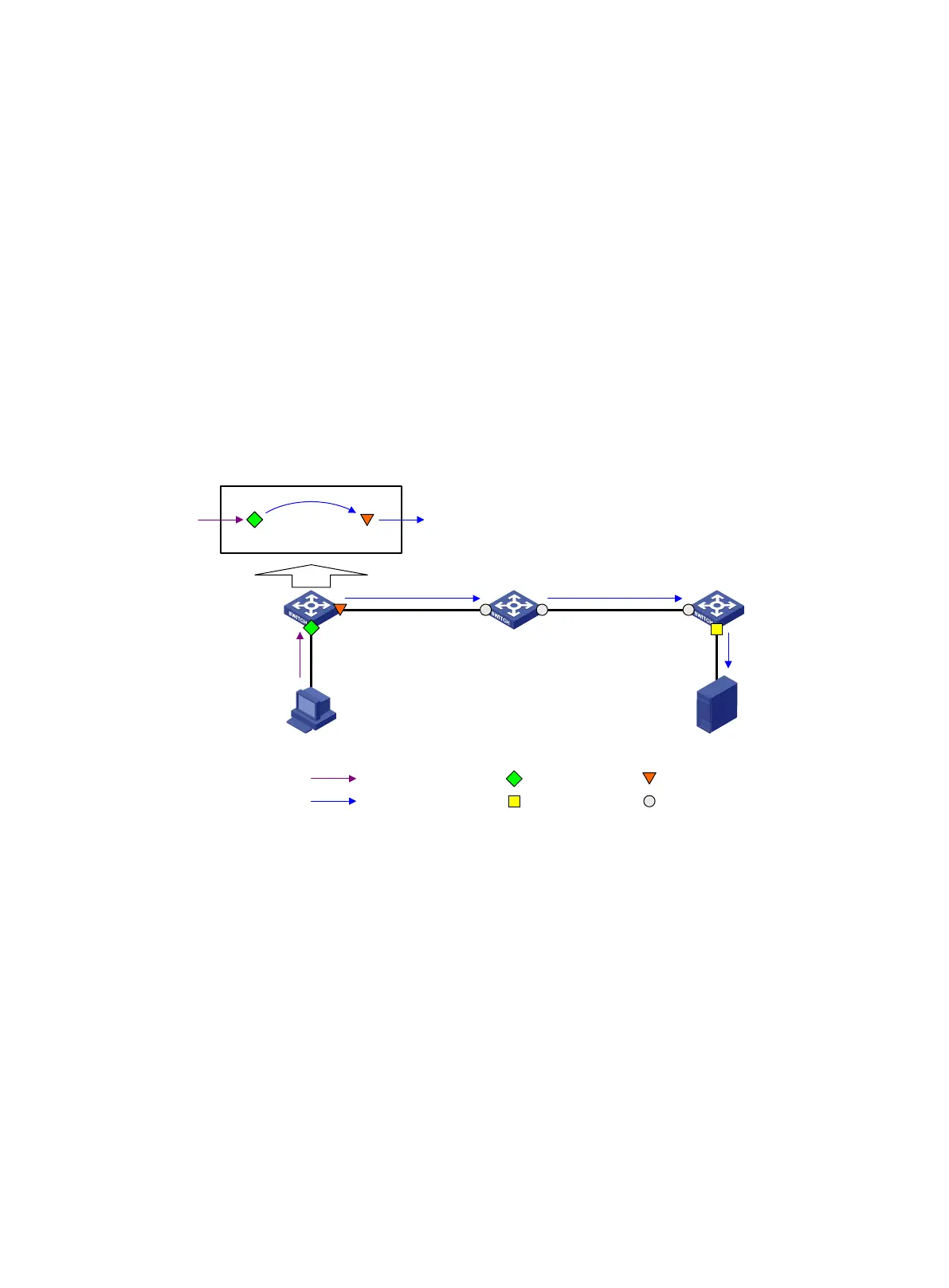158
A remote source group or remote destination group is a mirroring group that contains the mirroring
sources or the mirroring destination, respectively. Intermediate devices are the devices between the
source devices and the destination device.
Remote port mirroring includes the following types:
• Layer 2 remote port mirroring—The mirroring source and the mirroring destination are
located on different devices on a same Layer 2 network.
• Layer 3 remote port mirroring—The mirroring source and the mirroring destination are
separated by IP networks.
• Layer 2 remote port mirroring
The source device copies packets received on the source port to the egress port. The egress
port forwards the packets to the intermediate devices. The intermediate devices then flood the
packets in the remote probe VLAN and transmit the mirrored packets to the destination device.
Upon receiving the mirrored packets, the destination device determines whether the ID of the
mirrored packets is the same as the remote probe VLAN ID. If the two VLAN IDs match, the
device forwards the mirrored packets to the data monitoring device through the monitor port.
Figure 61 Layer 2 remote port mirroring implementation
To ensure Layer 2 forwarding of the mirrored packets, assign the intermediate devices' ports
facing the source and destination devices to the remote probe VLAN.
To monitor the bidirectional traffic of a port in a mirroring group, disable MAC address learning
for the remote probe VLAN on the source, intermediate, and destination devices. For more
information about MAC address learning, see Layer 2—LAN Switching Configuration Guide.
• Layer 3 remote port mirroring
Layer 3 remote port mirroring is implemented through creating a local mirroring group on both
the source device and the destination device.
Layer 3 remote port mirroring works in the following flow:
a. The source device sends one copy of a packet received on the source port GigabitEthernet
1/0/1 to the tunnel interface.
The tunnel interface acts as the monitor port in the local mirroring group created on the
source device.
b. The tunnel interface on the source device forwards the mirrored packet to the tunnel
interface on the destination device through the GRE tunnel.
Source
device
Intermediate
device
Destination
device
GE1/0/1
Remote probe
VLAN
Data monitoring
device
Host
Remote probe
VLAN
GE1/0/2 GE1/0/1 GE1/0/2 GE1/0/1
GE1/0/2
GE1/0/1
Mirroring process
in the device
GE1/0/2
Source port
Monitor port
Original packets
Common portMirrored packets
Egress port

